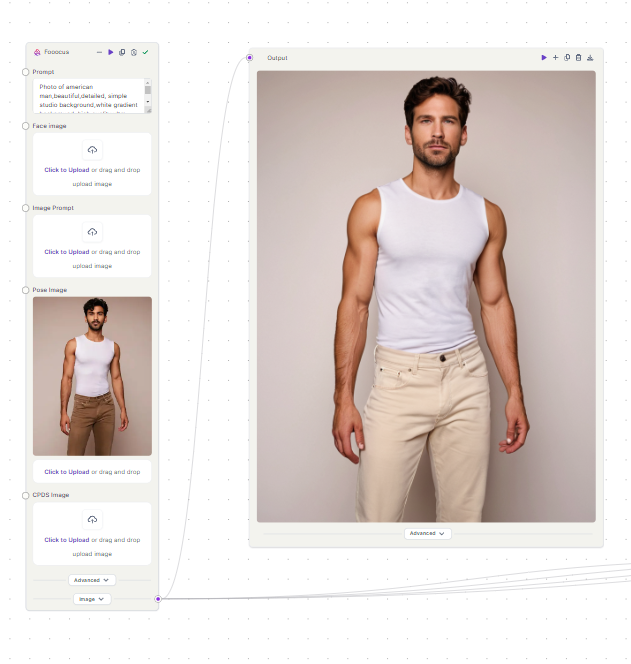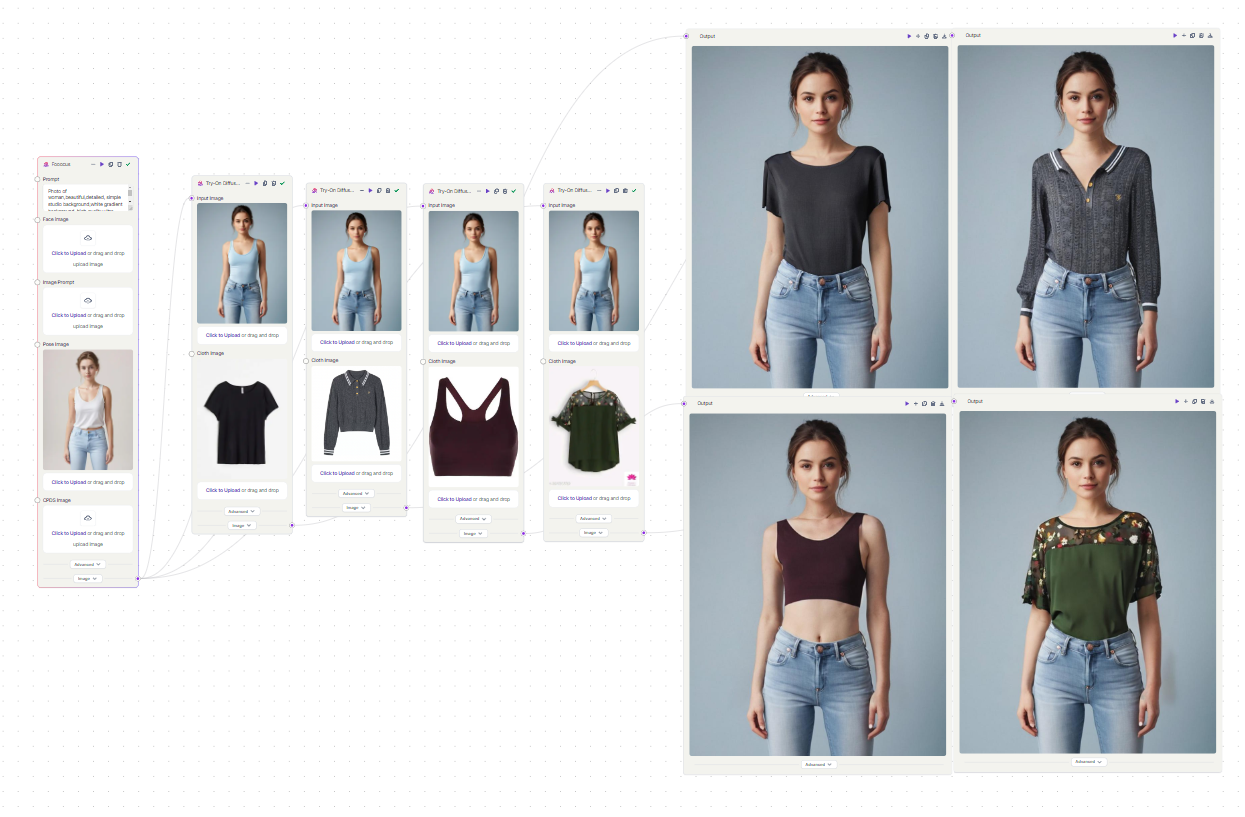Virtual Try-on: Revolutionizing Ecommerce with AI Clothing
Explore the transformative power of Virtual Try-on in online shopping with our blog post. Learn how the Generative AI models such as Stable Diffusion enables users to realistically visualize themselves in different garments enhancing the shopping experience.

Consider this scenario: A user uploads an image onto a platform enabled with the Stable Diffusion model. They then select a garment they're interested in. The model processes these inputs and delivers a visual output of the user wearing the selected garment. This model serves to give online shoppers a realistic view of how different clothes would look on them.
The world of online shopping is experiencing a significant transformation, thanks to advancements in AI and machine learning. One development that is pushing the boundaries is Virtual Try-on. This technology enables online shoppers to virtually try on clothes before making a purchase, providing a more interactive and personalized shopping experience. We are going to explore fascinating aspects of Virtual Try-on, specifically focusing on the Stable Diffusion model, an AI model that is changing the game in the ecommerce industry.
The virtual try-on workflow solves this problem for ecommerce industry, it takes an image of a person and a clothing and virtually overlays the clothing on the person.
Advantages of Virtual Try-on in Ecommerce Industry
The implementation of Virtual Try-on in ecommerce brings a slew of benefits for both retailers and consumers.
- Enhanced Shopping Experience: Virtual Try-on allows consumers to visualize how a garment would look on them without physically trying it on, leading to a more interactive and satisfying shopping experience.
- Reduced Return Rates: By providing a realistic view of the clothes, Virtual Try-on can significantly reduce return rates, a prevalent issue in the online fashion industry.
- Increased Conversion Rates: Virtual Try-on can also increase conversion rates as it helps customers make confident purchase decisions.


Under the hood of Virtual Try-on Workflow
- Creating Models: The first step involves creating a male and a female model. This can be done using fooocus. The models should be as realistic as possible to ensure the virtual try-on looks natural.
- Generating Images with Fooocus: Fooocus is an advanced AI text-to-image generator that converts textual descriptions into stunning images. It’s used to generate images of these models using a pose reference image or an image prompt. The goal is to have the outputs generated in the same pose as the reference image.


3. Inputting Images into the Try-on Diffusion Model: The images of the models are then input into the Try-on Diffusion model. Try-on Diffusion is a diffusion-based architecture that unifies two UNets (referred to as Parallel-UNet), which allows us to preserve garment details and warp the garment for significant pose and body change in a single network.
4. Overlaying Clothing: Along with the model images, an image of the clothing that we want to overlay onto the models is also input into the Try-on Diffusion model. In this workflow, we’re only showing virtual try-on for upper body clothing (like t-shirts, tank tops, shirts, etc.). However, the same process can be applied for lower body clothing (like pants, trousers, skirts, etc.).


Full Body Virtual Try-on Workflow: Work is currently underway to create a full body virtual try-on workflow. This will allow users to mix and match both upper and lower body clothing. This enhanced workflow will be made available to users soon.
You can access this workflow for free on Segmind’s Pixelflow, which is a no-code, cloud-based node interface tool where generative AI workflows can be effortlessly built. You can also turn this workflow into an API and integrate it into your apps or business.

Conclusion
In conclusion, the Stable Diffusion model is an exciting development in the world of Virtual Try-on. It not only enhances the online shopping experience but also presents a solution to some of the challenges faced by the ecommerce industry. As technology continues to advance, we are likely to see more innovative applications of AI clothing and Virtual Try-on that will redefine the future of ecommerce.
And with that, the world of ecommerce becomes a whole lot more exciting!

